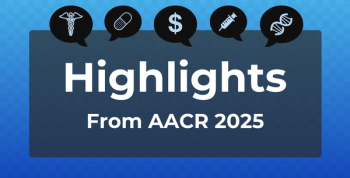
Using Apps to Persuade People With COPD to Increase Physical Activity
A study in Journal of Medical Internet Research sought to discover how technologies could encourage daily walking in this population. The researchers developed 3 prototype apps using different persuasive technology design principles: dialogue support, primary task support, and social support.
Physical activity can be difficult for people with chronic obstructive pulmonary disease (COPD), who experience breathlessness, muscle weakness, and chronic cough. However, people with COPD who walk regularly after pulmonary rehabilitation to stabilize their disease experience a higher quality of life and fewer acute exacerbations. The challenge is getting this population to increase their physical activity.
Previous research has found that technology-based interventions could potentially increase levels of physical activity in people with COPD.
“Our aim was to inform the choice of design principles and specific persuasive techniques in the design of an app that could be used to encourage physical activity in this population,” the authors wrote.
The participants were recruited through the British Lung Foundation Breathe Easy support groups and from a service through the National Health Service that specializes in care for people with COPD.
The researchers created 3 prototypes that showed various screens in the system and described navigation. However, they were not interactive prototypes. Prototype 1 used a dialogue support approach with a virtual coach that used the user’s name and led him or her through progressive goals. Users could receive reminders and receive audio encouragement while walking and the prototype provided a suggested exercise plan with daily goals that would increase.
Prototype 2 used the primary task support approach with the user setting goals and tracking activity on their phone. While walking, users could choose music and they would be offered feedback with activity levels for each day. This app would also highlight local exercise facilities on a map.
Prototype 3 used the social support approach to build a community of similar users to support physical activity. The app would promote communication between peers and encourage competition and collaboration while allowing users to track activity and share information with others. The app awarded points when users achieved their goals with the potential for both virtual and real-world rewards.
Respondents deemed the first prototype to be the one they would most likely use and the most persuasive of the 3. The second prototype was reported to be the technique most likely to get participants to use a technology. The third prototype, the social support approach, was rated the least persuasive by people with COPD. Both respondents and healthcare providers believed the competition nature of the social app could dishearten users and was inappropriate in this area.
Respondents also ranked features of each persuasive technology and reported that they liked the features of tips and advice on performing activity with COPD in the dialogue support, setting of individual goals in the primary task support, and being able to see a graph of their level of activity in the primary task support the most. Identifying local sporting facilities in the primary task support, getting stars and/or trophies for completing goals in the dialogue support, and displaying points earned to other people using the technology in the social support were the least popular features.
“The findings suggest that a system that supports dialogue between the user and the technology alongside supporting the primary task (here, walking) to promote the self-regulation of physical activity is likely to be acceptable to [people with COPD] and perceived as persuasive,” the authors wrote.
Newsletter
Stay ahead of policy, cost, and value—subscribe to AJMC for expert insights at the intersection of clinical care and health economics.









































